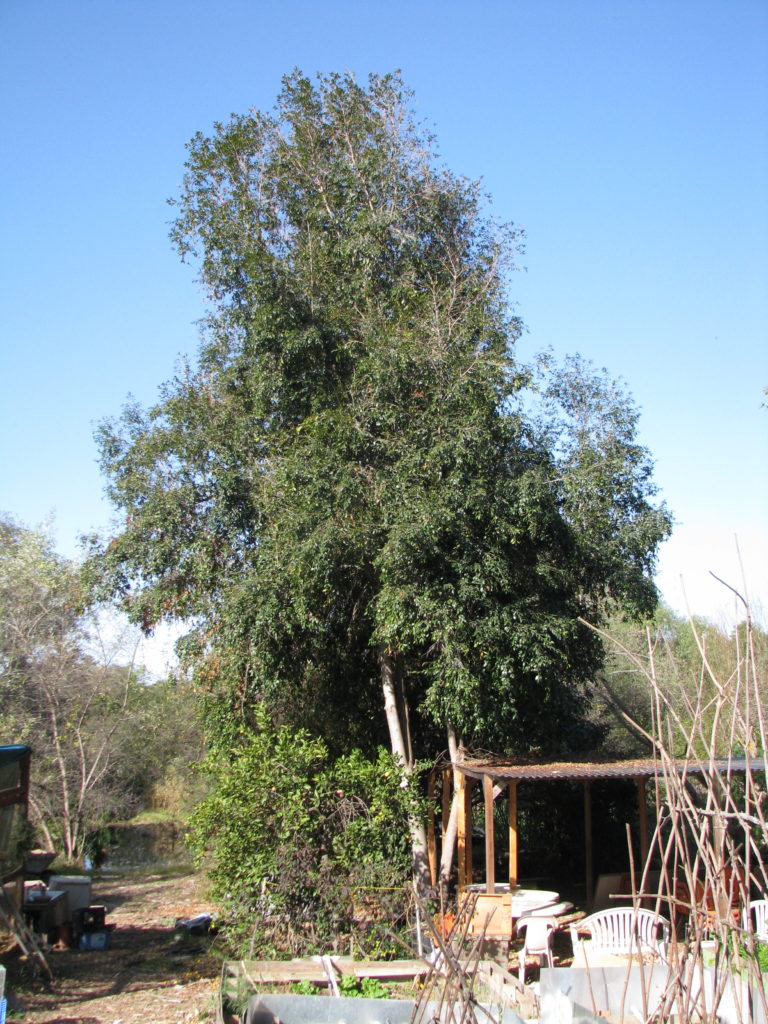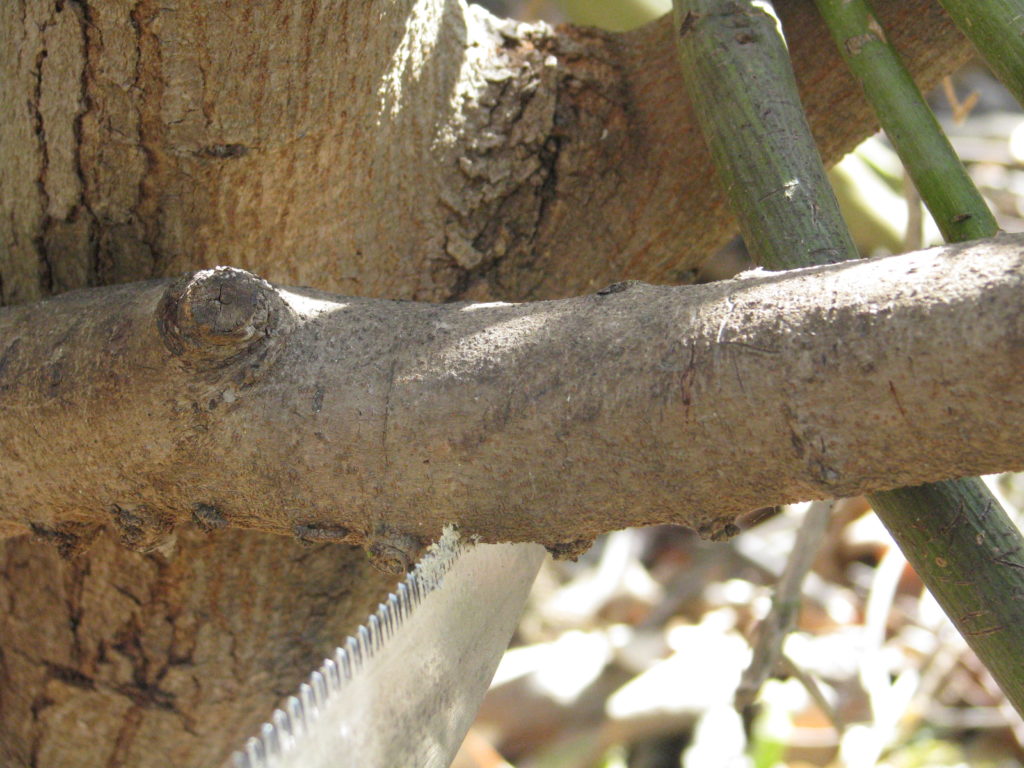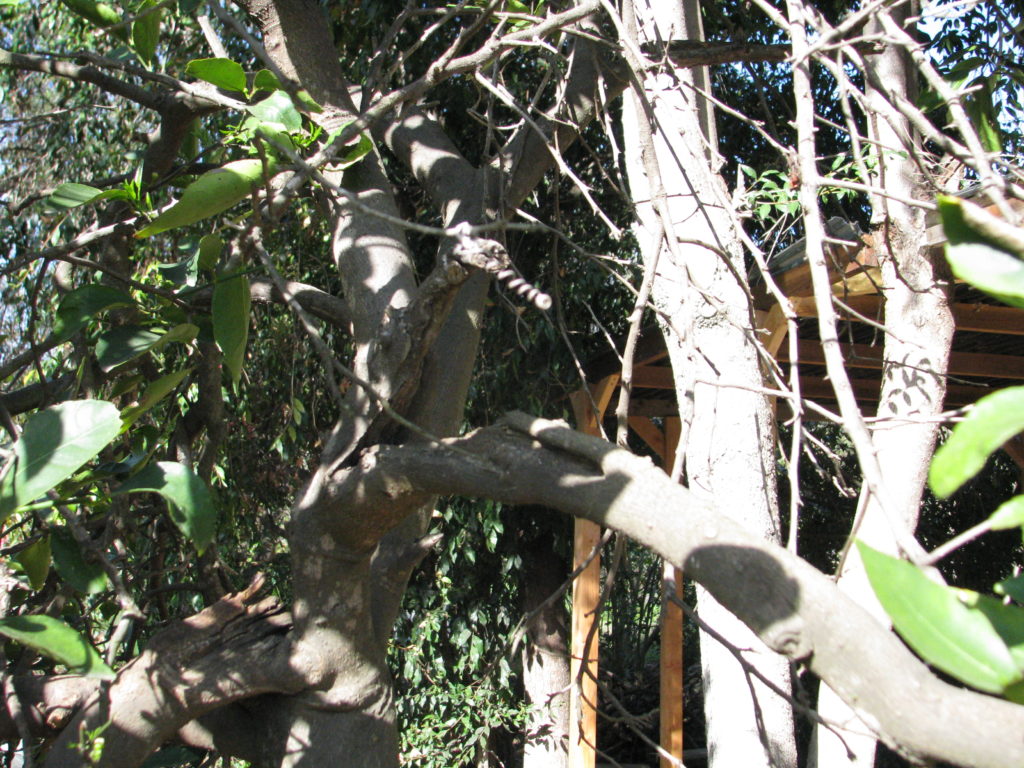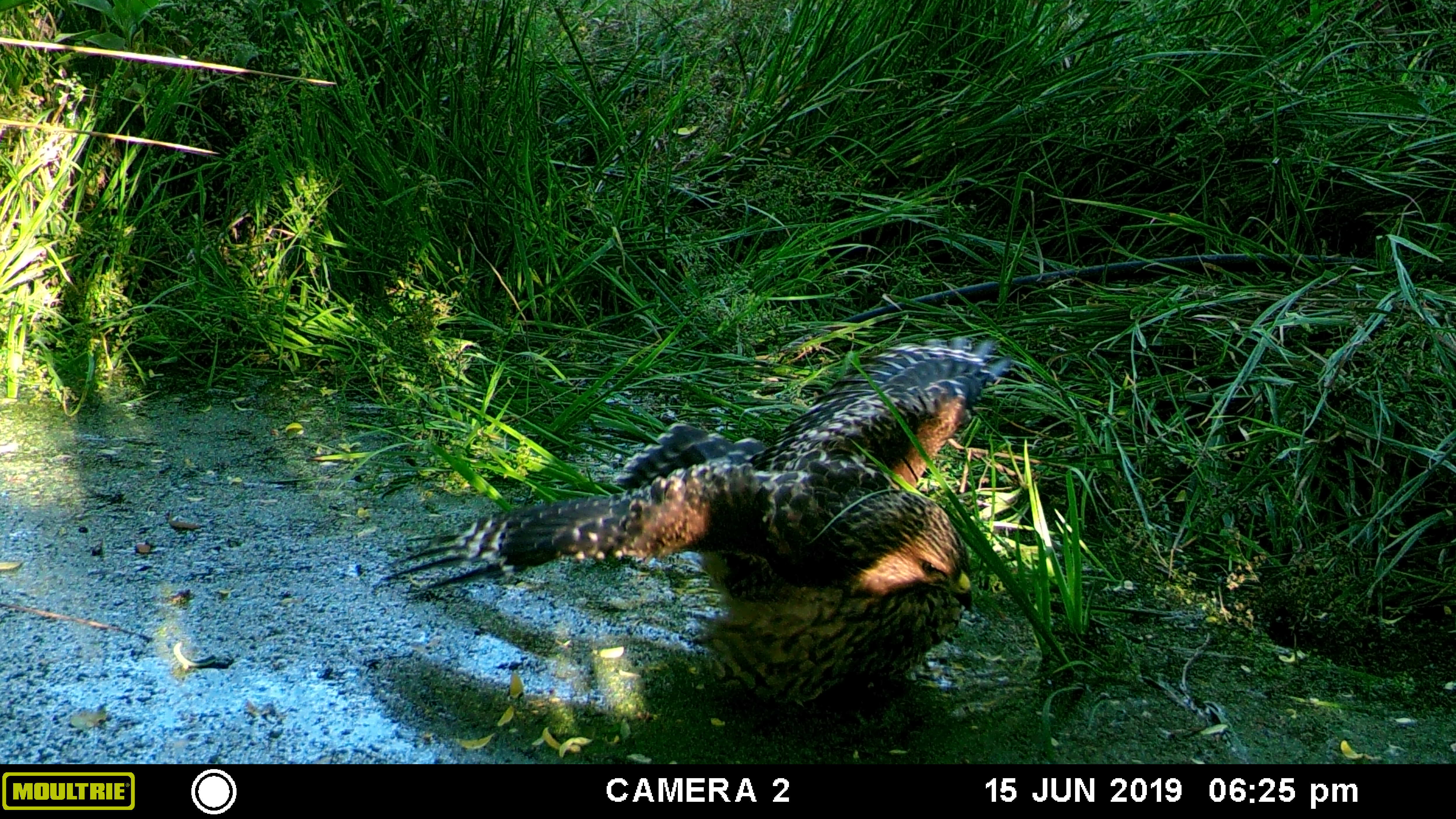Pruning: the basics

Pruning is a point of contention with me. If you plant a plant in the right place, meaning that it has room enough to grow to its full potential without having to be constantly cut back, then you really won’t have pruning issues. So often I see trees being used as hedges right next to houses or pathways, so they have to be butchered regularly to keep in shape. Because the tree is supposed to be large it produces a lot of woody growth, and over time that is what you’ll see: lots of cut wood with a layer of leaves over the top. Or thorny plants right next to pathways. Or trees with invasive root systems, such as Ficus, California or Brazilian Pepper (neither from California), or eucalyptus, planted right outside a house or near the septic tank. These plants are aggressive in how they find water and they will lift pavement. So understanding the nature of the plant through research, not just what the employee at the garden center has to say, is important so that you aren’t planting an expensive and possibly hazardous problem. If I could wave a magic wand and eliminate 90% of the above-mentioned trees in this state and replace them with drought-tolerant native trees, I’d have no hesitation.

Back to pruning and away from my tree-placement rant.
During my consultations I hear clients say, “This tree needs pruning.” I ask them why they think so, and often they really don’t know. They feel that they have to control the tree somehow, or that human intervention is required. My response is usually, save your money and the preserve the health of the tree by NOT PRUNING. When you make a wound in a plant you open it up for disease and insects. If you continue to change the nature of the tree it will be stressed, and then you will have more insect and disease issues. So please, just leave the trees alone, in most cases.
A horticultural teacher once explained that lawns are partially there for stress control. A person rides through aggressive traffic twice a day, works at a miserable job with miserable people, comes home to messes, a cranky family and bills, has weight issues. So on the weekends he or she can break out the lawnmower and cut that grass down, keep it the same size and make it obey. They have some control over something in their lives, and making that grass immaculate is possibly the only thing standing between them and the loony bin. Over the years from what I’ve seen, I have to agree with that teacher, and extend the example to tree and shrub pruning as well.
When you have young fruit trees, you are planting them for production. You are using them as livestock, so manipulating them for maximum yield is probably on your mind; however, long life and chemical-free growing should also be on your mind, and again, resisting the urge to chop away at your trees is the best bet. Don’t take advice from those in the food-producing industry because they are maximizing their crop for sale using every means they can, including having a short life expectancy for their trees which they will replace at projected intervals. Backyard fruit production is different. You want fruit, but a nice-looking yard as well.
Before you begin, be sure that you have sharp tools that are up for the job. Hand pruners for small stuff, loppers for 1/2″ – 1″, and saws for larger branches. ALWAYS bring Lysol or a bleach solution to clean your blades so that you won’t spread any disease between trees, and treat your blades between each tree. Keep your tools sharp and don’t twist them when cutting or you will mess up your blades. Wear hand, eye, arm, and breathing protection because those little bits have a way of fighting back. For larger limbs, head protection as well. Its better to look like you are ready for a nuclear explosion than to be injured by snapping branches, thorns, falling debris, and even angry insects or birds.
Understand what you are pruning. Many fruit trees and berries fruit on second-year wood, so if you cut it all off, you won’t have blooms. Just because something doesn’t have leaves on it doesn’t mean that its dead; many plants have late dormancy, or go drought dormant in the heat of the summer. If you lightly scratch the bark with your fingernail and there is green underneath, it is alive.
Prune to a node. A node is a growth point. Aim for one that is facing out or to the side, rather than into the plant.
Cut close to the stem, but not right up against it. There is a collar at the base of each shoot, and if you cut just above that, then that will callus over. If you cut into it, it will leave a wound that can be infected. If you leave a stem, that will die back to the node and in doing so may bring in fungus or insects. If you are cutting something heavy, then make an undercut first, then make another cut on top further along the branch, and then the weight of the branch won’t make the bark tear and rip down the tree. Make a final cut close to the collar.



The basics for pruning are, for new trees, cut off dead wood. If you have large ornamental trees, you don’t need to do this unless there is disease or insects in the dead wood, or there is a threat of large dead wood falling on someone. Otherwise, don’t feel the need to ‘clean up’ the tree. Most of the insects and fungus that will inhabit that wood are benign, and actually help with the health of the tree and the ecosystem around it.
Cut off diseased wood. If there is a black or brown ooze from a branch, have it identified. It is probably a fungus or an insect. It may be easy to control, but you have to know. Burn, hot compost (150F – 170F), or bag up and throw away that wood so that you aren’t spreading a pathogen.
Cut crossing branches that are rubbing up against each other and will open wounds on the bark. Also, trim some branches that start at one side of the tree and grow through the middle to the other side. They aren’t doing the plant any favors.

After you do these quick pruning jobs, usually you have very little to do in the future for maintaining your trees. If you have pine trees, please research the type you have to know if they will regrow at the pruning points or not. So often pines are butchered and they won’t grow back where cut. Or the idea is to ‘give them air’. We have Santa Ana winds, for heaven’s sakes, not muggy conditions that build up fungus like Chicago. Most non-native pines (to S. Ca.) thrive with humidity, so ‘cleaning up’ the pine to allow air flow will just stress them out even further by drying them out. (Also, many pines such as sequoias won’t thrive in S. Ca. because of our alkaline soil and alkaline water. They will live for awhile, and then their root base just can’t feed the growing top of the tree which is supposed to be huge due to the inability to obtain the nutrients they require from our non-acidic soil conditions.)
Many people prune their fruit trees down for height so that you can pick them. This should be done within the first two years after planting a tree so that its hardwood forms low, and then the greenwood sprouts can be pruned yearly to keep it low. Again, if you plant a dwarf or semi-dwarf tree, then you won’t need to stress out the tree every year.
When you stress a plant, just like when you yourself become stressed, you will have to treat it. Usually people resort to a series of chemicals, each of which incur more issues that will need to be treated with more chemicals. If you stress a tree and it is covered with insects you then spray those insects, which then also kills off all the hundreds of native preditory insects, so that you will have more bad insect and disease issues in the future. The best policy is to plant the right plant in the right place (permaculture is 99% design, remember), understand the needs of the particular plant and meet them, do any corrective pruning at the beginning (they are children and need gentle correction to help them grow strong!), and then provide them with appropriate soil and appropriate water from then on. No chemical sprays! No systemics! No tree torture! Less stress for the plants, and less stress and expense for you.
If you feel the urge to prune, take up adult coloring books or yarn dying, labyrinth walking or birdhouse building instead until the urge passes. When you really don’t feel like pruning then you can logically evaluate your tree’s needs and won’t hack away at it. Its like not shopping while hungry. Enjoy the healthy beauty of your plants and the nature they support instead.


